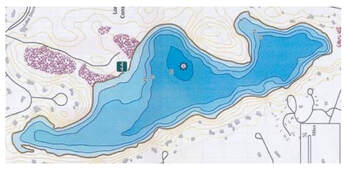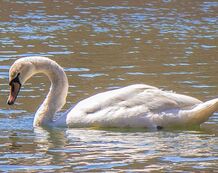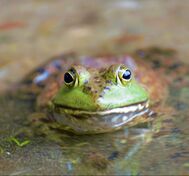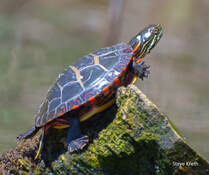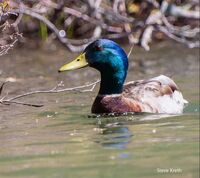|
Long Pond Marstons Mills is a 55 acre kettle pond owned by the State of MA and managed by the Town of Barnstable. It is approximately 3500 feet long and 700 feet wide. Its depth extends up to 18-20 feet in two areas (holes). The pond's watershed (area from which above and below ground water drains into the pond) is approx. 430 acres and extends to the northwest of the pond. |
Our pond is home to many creatures including those pictured below.
We are also fortunate to have fresh water mussels, which help clean our pond. Click here for more info: long_pond_-_mussels.pdf
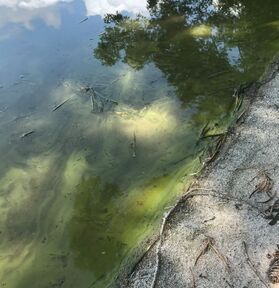
Long Pond is among one third of ponds on the Cape experiencing cyanobacteria overgrowth, resulting in harmful algal blooms ("HABs".) This problem has been growing over many years throughout the U.S. and around the world. Scientists are gaining a deeper understanding of the issue, and tech companies are applying that knowledge with new devices and techniques. Friends of Long Pond Marstons Mills is keeping abreast of new developments and working to pursue those that appear most promising.
The Association to Preserve Cape Cod has targeted cyanobacteria as one of its major initiatives. The Barnstable Clean Water Coalition is also addressing this problem, with a focus on alternative septic systems and other initiatives to reduce inputs into our ponds.
Studies of Barnstable Ponds:
APCC's State of the Waters: Cape Cod 2021 Report
Pond Water Quality Assessment of 23 Ponds in the Town of Barnstable using Pond and Lake Stewardship (PALS) Protocols, 2017
Action Plan for the Barnstable Ponds, EcoLogic LLC , Stearns & Wheler GHD, December 31, 2009
Barnstable Ponds: Current Status, Available Data, and Recommendations for Future Activities FINAL REPORT July 2008
